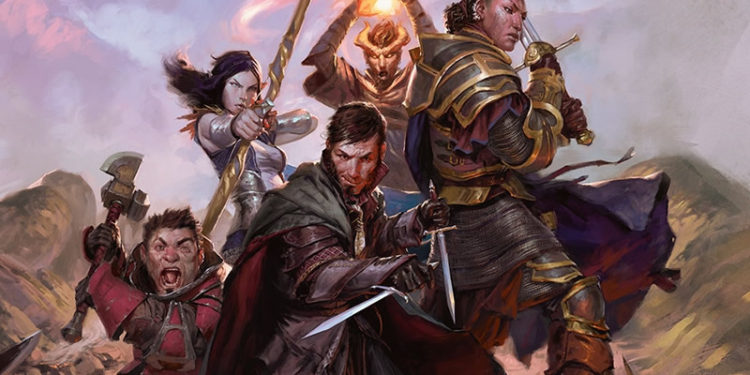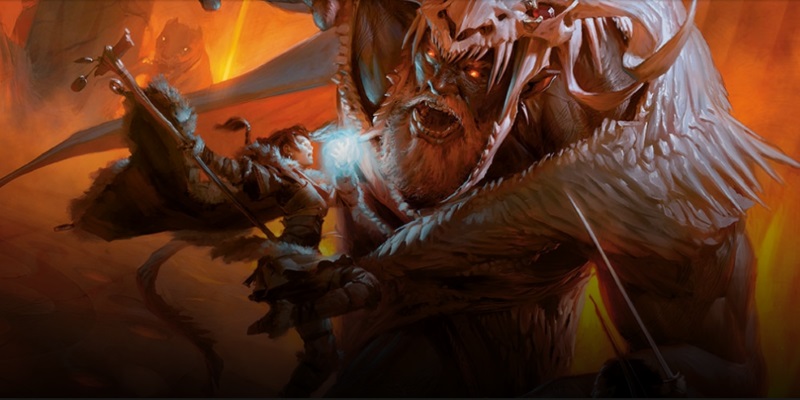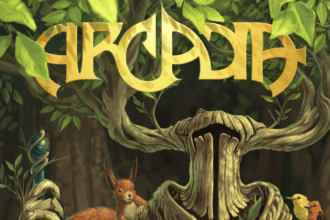UA 2020: Psionic Options Revisited Breakdown

The WotC team plunges in again on psionics design, in the new UA release. Unlike a lot of UA documents, this one spends about a page discussing the winding path of psionic/mystic development in UA to date, including the official deprecation of some prior UAs – the Psionics wizard and several psionic attack spells. My only issue is that I like Int as the psionic casting stat more than Cha. (Apropos, I am glad that we have the artificer as a firmly Int-driven caster.)
This document is specifically replacing the Psychic Warrior with the Psi Knight (interesting to see the parallel phrasing to Eldritch Knight), offering an alternate Soulknife, replacing the Aberrant Soul sorcerous origin with the Psionic Soul, and replacing previous feats and spells with new ones.
There’s a sidebar addressing the age-old question of whether psionics is a form of magic or not. I don’t recall ever seeing a discussion of this land on “it is if we say it is, otherwise no.” It won’t satisfy everyone. The great truth of psionics is that in any group of 500 people, there are 537 non-overlapping, strongly-held opinions on psionics. That said, I find the argument that some psionic power is inchoate and some is patterned like a spell to be tolerable, without making every feature that a subclass gains subject to counterspell or an anti-magic field.
There’s one mechanic that runs through all three subclasses, and I’m going to explain it once up front. Each subclass’s Psionic Talent feature grants a Psionic Talent die that starts as a d6 and shifts up or down in die size over the course of each day, resetting to d6 on a long rest. That baseline d6 steps up to a baseline d8 at 5th, d10 at 11th, and 12 at 17th. The die increases when you roll a 1 on it and decreases when you roll its maximum value; many subclass features also decrease the die. You further gain one reset-to-base-value feature per long rest. I have mild concerns about the fact that die size increasing and decreasing are equally likely, while several features only decrease the die size – it leaves the “budget” up in the air. Curious to see how it plays out.
Psi Knight
On pure aesthetics, Psi Knight is neither better nor worse than Psychic Warrior to me. They don’t quite want to call them Force Knights and they can’t legally call them Jedi Knights, so this was the next best option. I think this is the first time I remember a reference to high elves favoring this subclass, and I find that interesting. Githyanki… well, yeah. There’s a githyanki NPC in my campaign who might get rebuilt as a Psi Knight.
- Psionic Talent gives Psi Knights three additional options:
- Protective Field is a reaction that reduces damage to one creature by the Psionic Talent die + your Int modifier. We’re off to a Battle Master Maneuver-ish take on defender mechanics, and these are a few of my favorite things.
- Psi-Powered Leap is a movement boost, and it’s kind of surprising to see a random-distance leap in the first place. Anyway, you cover a number of additional feet equal to your die roll + your Int modifier. That won’t come to a full 5-foot square of additional distance all the time, but this is still a fun, flashy move. I’d like to see more encounters written to make jumping awesome, but it’s hard to do in tabletop gaming. I wouldn’t mind seeing this stepped up to behave a little more like Step of the Wind, with which it shares a concept.
- Telekinetic Strike lets you use your die for extra damage against any target within 30 feet. There’s some really unusual wording going on here – it’s not phrased as a traditional damage add, even a 1/round damage add. Instead, you don’t declare that you’re using (and thus risking) your PT die until after you deal damage, but you have to declare it immediately – you can’t finish out your attacks for the round, for example. I’m not clear if “immediate” lets you know if your target is dead or not before you make your decision. Does dying take time?
- Telekinetic Adept at 6th level grants two further effects.
- Psionic Thrust steps up your Telekinetic Strike with your choice of a knockback or knockdown, if the target fails a Strength save. This is the other reason Telekinetic Strike isn’t a standard damage add – it makes it easier to refer to as an event if it’s something you declared.
- Telekinetic Movement is mage hand on steroids. It can move an object up to Large size (“Size matters… well, some. Judge me by my Size, do you?”), or pull a Tiny object directly to your hand (an unlit lightsaber, perhaps). This costs you one step of die size.
- These are both very classy Jedi tricks. Thumbs up.
- Psi-Enhanced Metabolism at 10th level grants resistance to poison and psychic damage, and immunity to the poisoned condition. It’s the first metabolic feature we’ve seen here, but sure, this is still on-message for D&D psionics.
- Bulwark of Force gives half cover to a number of nearby creatures equal to your Int modifier, possibly including you. This lasts for 1 minute or until you’re incapacitated; you get one free use per long rest, and every use after that costs you a die size.
- Telekinetic Master at 18th level lets you cast telekinesis in exchange for a die size decrease. It’s hard to be sure how often you’ll want to do this in combat, but it’s a great exploration feature if nothing else.
Overall, I love the concepts, but I worry about the Psionic Talent die as currency management. Psi Replenishment is once per long rest, and otherwise you’re relying on a die outcome that is just as likely as the one that costs you a die size step. I’d like to test out “die size increases on 1-2 and decreases on max value,” just to feel like it’s keeping up with the easily-replenished Combat Superiority dice. The variability of the PT die is going to make all of these harder to judge.
Soulknife
Everything I might say about the Soulknife being Psylocke has been covered in previous UA breakdowns. I love the new paragraphs of text that this version offers – elven, githzerai, and Athasian Soulknives are all great. The goal is to show that psionics doesn’t have to be the mysterious force with no prior foundation even in a standard D&D game. It can be the rules block we use to talk about unusual-but-not-unknown elite combatants.
- Psionic Talent grants two features here:
- Psi-Bolstered Knack, adding the PT die to a failed skill or tool check with which you have proficiency.
- Psychic Whispers lets you set up a telepathic MMS with you and a number of creatures equal to your PT result, limited to a 1-mile range and lasting just one hour. It also works around any language barriers, and you’ll feel really cool whenever you get to use this feature for that. There’s no per-day limit on this or any die size cost, but you’re going to be kind of unhappy about either extreme roll. Maximum die value -1 is your ideal roll.
- Psychic Blades hasn’t changed a whole lot from previous iterations, though you’re now dealing 1d6 damage in one hand and 1d4 in the other.
- Soul Blades at 9th level (man, the rogue class structure gets me every time, with that jump from 3rd before you get more features) gives you two features.
- Homing Strikes lets you add your PT die to a failed attack roll. The PT die always decreases from this, regardless of result (which I read to mean that it wouldn’t decrease twice on a max die result). Landing your Sneak Attack every round is your number-one job as a combat rogue, so this definitely has a place.
- Psychic Teleportation lets you throw your psychic blade as a bonus action and teleport to where it lands, a distance equal to 5 ft times your PT die’s maximum value. This always costs you a die size step. This is a modestly expensive misty step that, depending on luck, you might get to use a little or a lot.
- Psionic Veil at 13th level works about like it did in the previous draft. 10 minutes of invisibility, 1/long rest – or you can step down your PT die to reset it. Good feature to have; 10-minute duration is good but not outstanding. It doesn’t cost concentration, but it is 1/6th the duration of a 2nd-level spell, when it comes to longer-term infiltration jobs.
- Rend Mind at 17th level is, again, a feature we saw last time, but here you can refresh it by stepping down your PT die. You deliver a Sneak Attack, force a save, and on a failure, the target is stunned. It goes without saying that stunned is one of the nastiest conditions in the game.
Oh boy, is that a lot of features drawing off the same unreliable currency pool, even more so than the Psi Knight. I would love to feel more confident that you’re not going to have a little bit of bad good luck and get left wondering what happened to your subclass. (Psi Replenishment covers some sins, but not that many.)
Psionic Soul Sorcerous Origin
The flavor text of this one gets several paragraphs and a d10 table more love than most sorcerous origins. Let’s play a game called “spot the legacy D&D monster that doesn’t have an official 5e version yet!”
- Psionic Talent offers three features.
- Psionic Discovery lets you temporarily discover new divination or enchantment sorcerer spells, of a level you can cast, for a number of hours equal to your PT die result. You’re going to want to do some prep with this, to make sure you’re not scouring the books during sessions. This is some really nice spell list flexibility for a sorcerer.
- Psychic Sorcery lets you spend your PT die to cut out verbal components, and if your die result is equal to or higher than the spell level, you also don’t need somatic or material components.
- Telepathic Speech is different in a lot of interesting ways from Psychic Whispers – it’s language-dependent, single-target, potentially larger distance limit and longer duration.
- Psychic Strike at 6th level does for your spellcasting what Telekinetic Strikes does for Psi Knights – the damage you deal just has to come from a sorcerer spell for which you expended a spell slot.
- Mind Over Body at 14th level gives you potentially a lot of different abilities. Roll a PT die to determine duration in hours; spend 1-4 sorcery points, and gain one feature per point. The features include seeing invisible creatures, flying (with hovering), swimming (and breathing underwater), and slipping through very small spaces (including escaping grapples or restraints automatically). That’s a great collection of exploration features, with a decent amount of in-combat power. Big fan of this one.
- Psychic Aura at 18th level lets you radiate damaging psychic energy for 1 minute, or until you lose use of your PT die. You can choose to deal damage or not when a creature starts its turn in the 30-ft aura. The damage is the PT die result + your Cha modifier, and if it takes damage, its speed is halved for the round. This feature probably isn’t turning the tide of any fights, but it’s pretty cool all the same.
The Psionic Soul feels less dependent on the PT die than the Psi Knight and Soul Knife do, though Psychic Strike is a great way to build up or wreck your die size. Psionic Discovery is one of my favorite bits here, as is Mind Over Body. The text doesn’t lean heavily on encouraging the player to pick spells around a psionic theme, so I’ll be the one to say it. Sorcerer spells can come across as highly psionic, or not, all depending on your choices and descriptions. Don’t ask the subclass to do all of the lifting on its own.
Three New Spells
Intellect fortress is a 4th-level spell that grants you or an ally resistance to psychic damage and advantage on Int/Wis/Cha saves for an hour. The real beauty is getting to pick extra targets with higher-level spell slots.
Mind sliver has been with us for a few documents now, and I don’t think it has changed? I’m not looking it up right now, though. Anyway, new attack cantrip, d6 psychic damage, and a d4 penalty to the next saving throw. Great setup spell, outstanding choice for Quicken Spell.
Mind thrust is a 2nd-level enchantment attack spell, which is nice to have on that basis alone. Its damage is modest, but on a failed save it denies reactions and on its next turn, the target gets only to move or take an action or take a bonus action. At higher levels, the damage stays the same, but you get to pick more targets; by the time we’re talking about a 3rd-level slot, though, slow is better for most applications (not damage-dealing, of course).
Five New Feats
We get new feats so rarely that I’m quite surprised by this spread. There’s even something that could potentially be (gasp!) a small feat chain. Four of the feats require that you have a PT die, either from a psionic subclass or from the fifth feat, Wild Talent.
Metabolic Control
In addition to 1 point in Str or Dex or Con, this also lets you sustain yourself without food by stepping down your PT die. Once per long rest, you can take a short rest in 1 minute, also stepping down your PT die. The second feature is going to be an incredibly big deal at some tables, I would predict.
Telekinetic
In addition to 1 point in Int or Wis or Cha, this also teaches you mage hand (invisible, no-components psionic edition, and +30 ft range if you already know the spell), and gives you a hugely upgraded telekinetic shove from the last time we saw this: 5 feet times the PT die result. That could be a whole lot of throwing!
Telepathic
In addition to 1 point in Int or Wis or Cha, this also gives you 30-ft-range language-dependent telepathy, and you can step down your PT die to cast detect thoughts. Getting any 2nd-level spell off of a feat looks like a big deal, even with its cost. Probably a lot of groups are sleeping on detect thoughts, too – it’s a big-time information gathering spell for just 2nd level.
Tower of Iron Will
Happy to see this get name-checked. You reach out with your psionic ability to add your PT die to any failed saving throw within 30 feet, as a reaction. This could pull off some amazing defenses in the clutch.
Wild Talent
In addition to increasing any one ability score by 1, you also gain a d6 PT die and two features for it: Psi-Boosted Ability (add PT die to an ability check, after seeing the d20 but before knowing if you succeeded) and Psi-Guided Strike (replace a damage die with your PT die result). Changing the die’s size (including level scaling) and Psi Replenishment are unchanged. Notably, because it’s called Psi Replenishment here as well as in the subclass features, when it says “You can’t use Psi Replenishment again until you finish a long rest,” psionic characters can’t buy Wild Talent to get this twice in one day.
Conclusion
Overall, I think the ideas are fascinating and there’s a great way forward getting carved out here. I also think the low-level Soulknife leaves a bit to be desired, and I have (to belabor the point) concerns about the Psionic Talent die. I do like that, as a worst-case scenario, you’re only missing your subclass features – you’ve still got your fighter, rogue, or sorcerer firepower to draw on if things go wrong. That’s the benefit to not making this the core feature of a new class.



